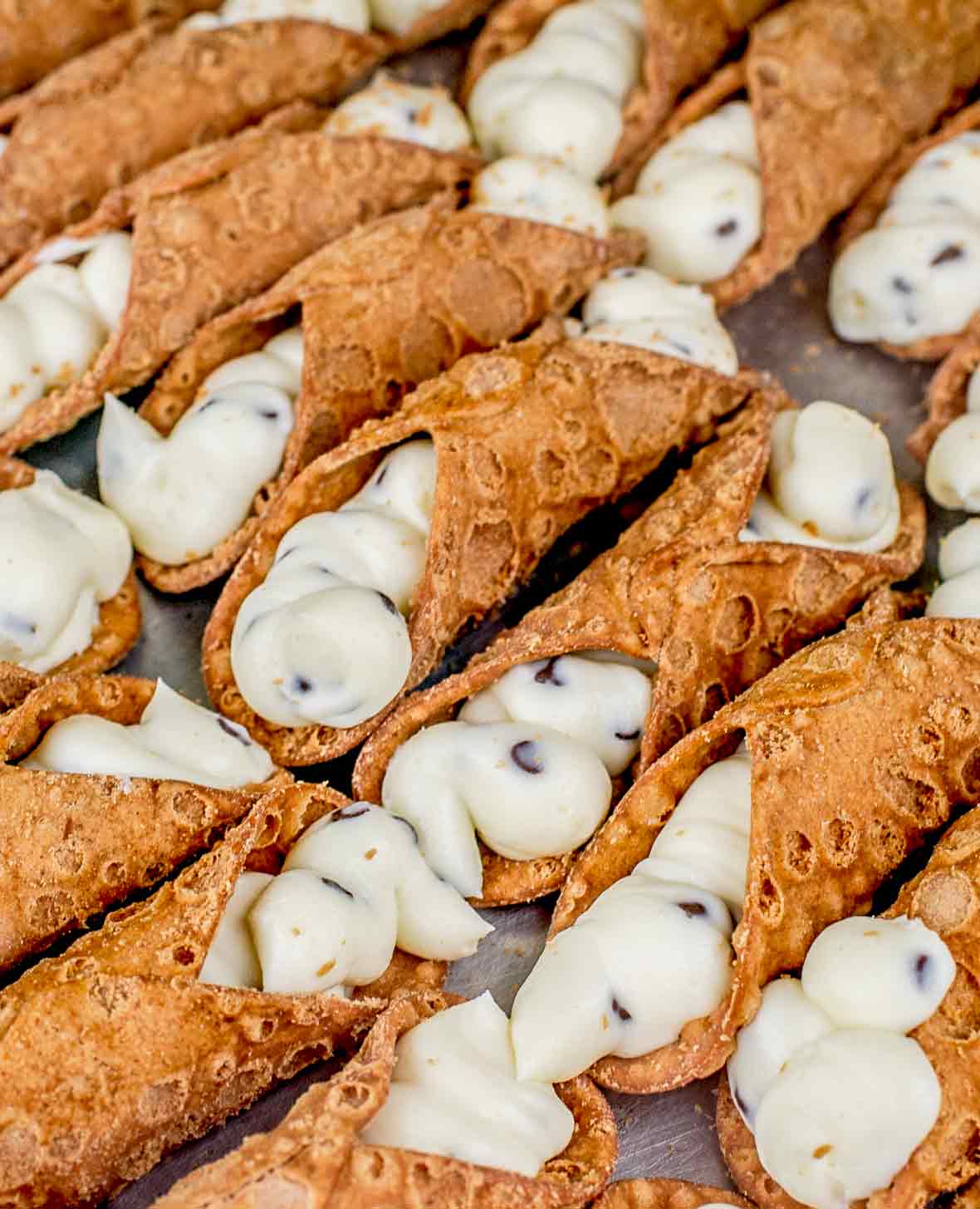
All we know about this cannoli recipe is that the author’s father opened his own pastry shop in 1961 after working for several years at DeLillo’s, located on 187th Street in the Italian section in the Bronx. We can only assume the recipe below is based on the cannoli sold at that shop. Based on our experience with this recipe, we can also assume that the lines went out the door for the cannoli.–David Leite

Classic Cannoli
Equipment
- Cannoli cutter (an oval-shaped cookie cutter); cannoli rod
Ingredients
For the cannoli shells
- Oil, for deep frying
- 2 cups cake flour
- 1 cup all-purpose flour
- 1/4 cup granulated sugar
- 8 tablespoons lard
- 1 tablespoon rum
- 1 tablespoon honey
- Pinch salt
- 1/2 teaspoon ground cinnamon
- 1 large egg
- 1 to 2 tablespoons cold water
- Egg wash, (2 eggs whisked with 2 tablespoons water)
For the cannoli filling
- 1 pound dry ricotta, (impastata) or buy good-quality ricotta, line a strainer with cheesecloth, place the cheese in it, and drain overnight or a full day
- 1/2 cup granulated sugar
- 1/4 teaspoon ground cinnamon
- 1/4 cup mini chocolate chips or finely chopped chocolate
- Confectioners’ sugar, for dusting
Instructions
Make the cannoli shells
- Heat the oil in your deep fryer to 320° F (160°C).
- With a mixer, combine the cake flour, all-purpose flour, granulated sugar, lard, rum, honey, salt, cinnamon, egg, and just enough water so that it attains a dough-like consistency. (The amount of water you need to add will vary according to the outside temperature and humidity.)
- Roll the dough to the thickness of pasta (which is about 1/4 inch. Using a cannoli cutter (an oval-shaped cookie cutter), cut out as many cannoli as you can. Arrange several cannoli ovals in a row and place a cannoli rod down the center. Flip the cannoli up and over, sealing the edges where they meet by lightly brushing the dough with egg wash and pressing so the edges adhere.
- Deep fry the cannoli shells, being careful not to crowd the oil, until golden brown, about 3 minutes. Slip them off the cannoli tube and let cool completely.
Make the cannoli filling
- Combine the ricotta, granulated sugar, cinnamon, and chocolate.
Assemble the cannoli
- Using a large-tip pastry bag, pipe the ricotta mixture into the cooled cannoli. Sprinkled with confectioners' sugar and serve.

Explore More with AI
Nutrition
Nutrition information is automatically calculated, so should only be used as an approximation.
Recipe Testers’ Reviews
So, I’ve never actually had a cannoli in my life. But I had a pretty good idea of how they should taste and what texture they should have.
My pastry was probably too thick and my filling was probably too lumpy, but these were surprisingly good given that I really had no idea what I was doing.
It should be obvious that I wouldn’t have the appropriate equipment for cannoli making—the cannoli cutter or the cannoli rod—so I improvised. I used stainless steel pastry horns and squeezed a round cookie cutter until it resembled an awkward oval.
Because of my inexperience with these, I can now see the mistakes I made—they should have been rolled out more thinly and they should have been fried a little longer as my shells weren’t quite sturdy enough. They were delicious and flaky but couldn’t reliably hold that delicious filling.
This recipe made about 20—it was hard to tell exactly how many between all the crumbly bits and the fact that they were eaten as fast as they cooled. I am not sure that I would make this again but that is only because my inexperience with them. They were delicious but I did find it a bit frustrating—pastry isn’t my forte and when you add deep frying to that, I might have just been a little out of my depths. Having said that, they were tasty and I love a challenge so this might become one of those crazy bucket list things. But first—I’m going to pick up some from an actual Italian bakery, just to “test.”











Can you use confectioners sugar instead of granulated?
Also “cream” is mentioned in recipe description but Never see where its used. Please advise. Thank you
Denise, we haven’t tried it with confectioners’, so we can’t say how it would turn out. I think it would likely work ok for the filling, but I’m not certain about the shells. The cornstarch in confectioners’ sugar can sometimes lead to unexpected results! And thank you for that catch on the headnote. You are correct; there is no cream in the recipe.